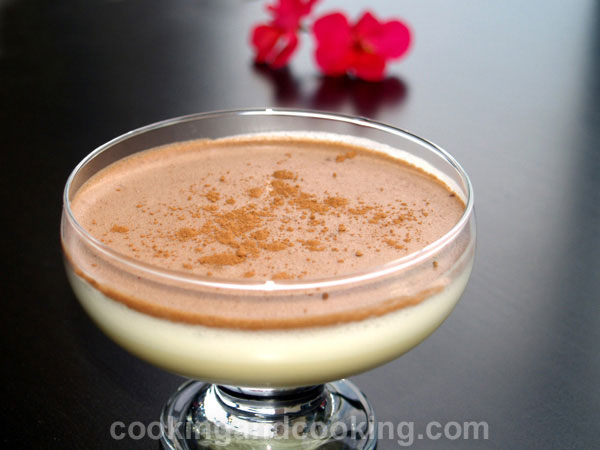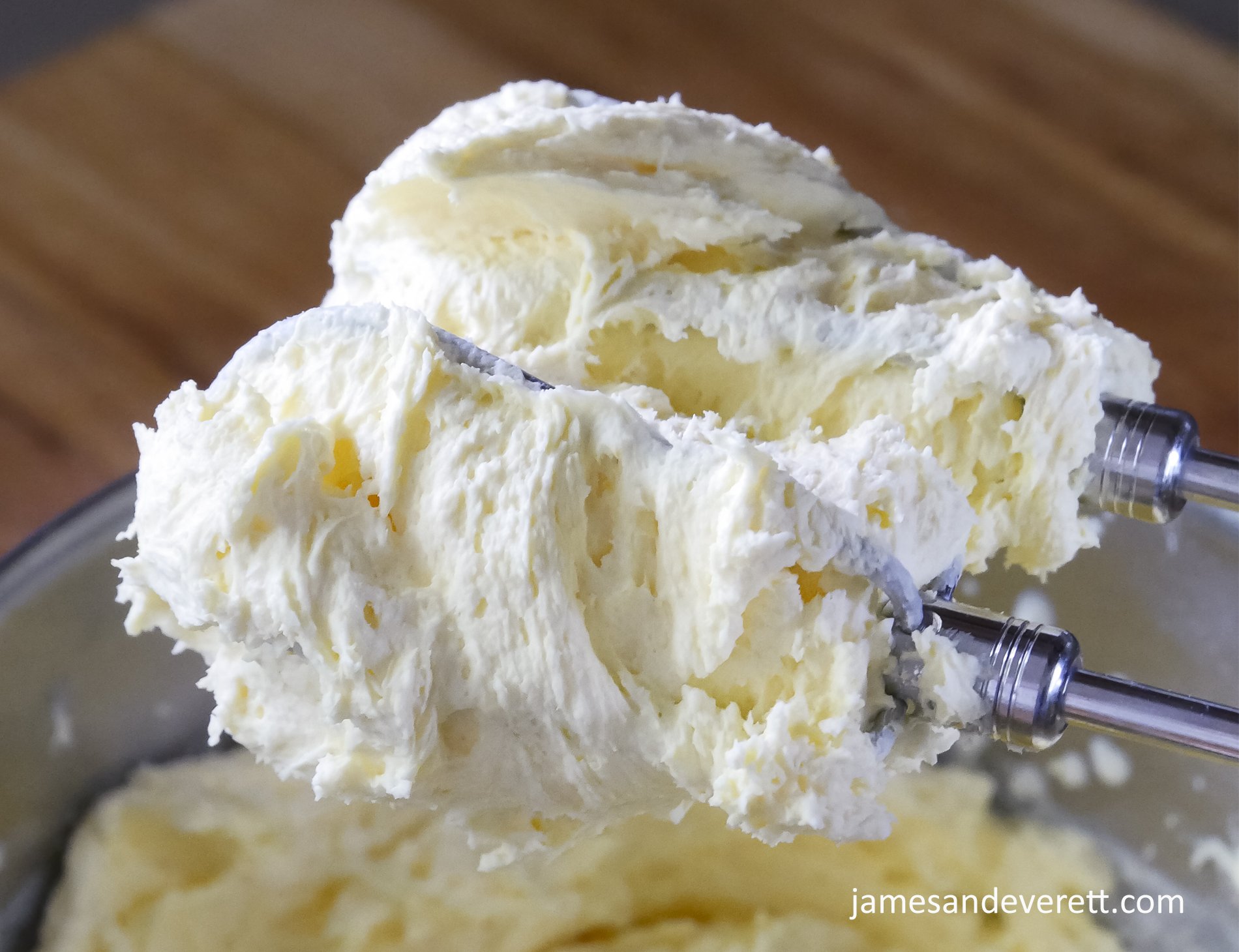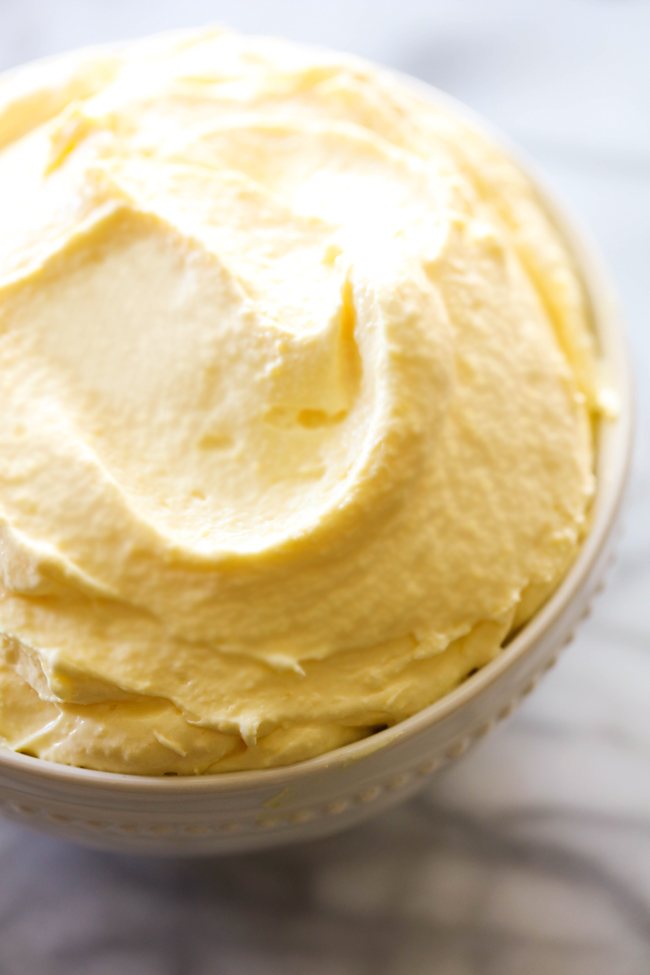Bavarian cream
Bavarian cream, crème bavaroise or simply bavarois is a French dessert consisting of an egg-based cooked custard and gelatin or isinglass, into which whipped cream is folded. The mixture sets up in a cold mold and is unmolded for serving. Earlier versions, sometimes called fromage bavarois, did not include eggs or any actual cheese. One recipe using isinglass also calls for crumbled amaretto cookies, chocolate and other flavorings. One contemporary French recipe for "bavarois" is a savory preparation with a neufchâtel-type cheese and leeks, and is not a sweet dessert. Bavarian cream is a classic dessert that was included in the repertoire of chef Marie-Antoine Carême, who is sometimes credited with it. It was named in the early 19th century for Bavaria or, perhaps in the history of haute cuisine, for a particularly distinguished visiting Bavarian, such as a Wittelsbach, given that its origin is believed to have been during the 17th and 18th century when French chefs cooked for the Wittelsbach princes, a German family that ruled Bavaria from the 12th century until 1918. In the United States, Bavarian creams first appeared in Boston Cooking School books by D. A. Lincoln in 1884, and by Fannie Farmer in 1896. From 1884 to 2022, there were over 95,000 references to Bavarian cream in US and Canadian newspapers, featuring recipes, commentaries and reviews. Of those references, over 14,000 were in the 1930s, which seems to have been the peak decade of popularity. Most references were in the states of New York, Pennsylvania and California (7000-8000 each), while the fewest were in Alaska and Guam (fewer than 50 each).
Source: Wikipedia
Recipes




